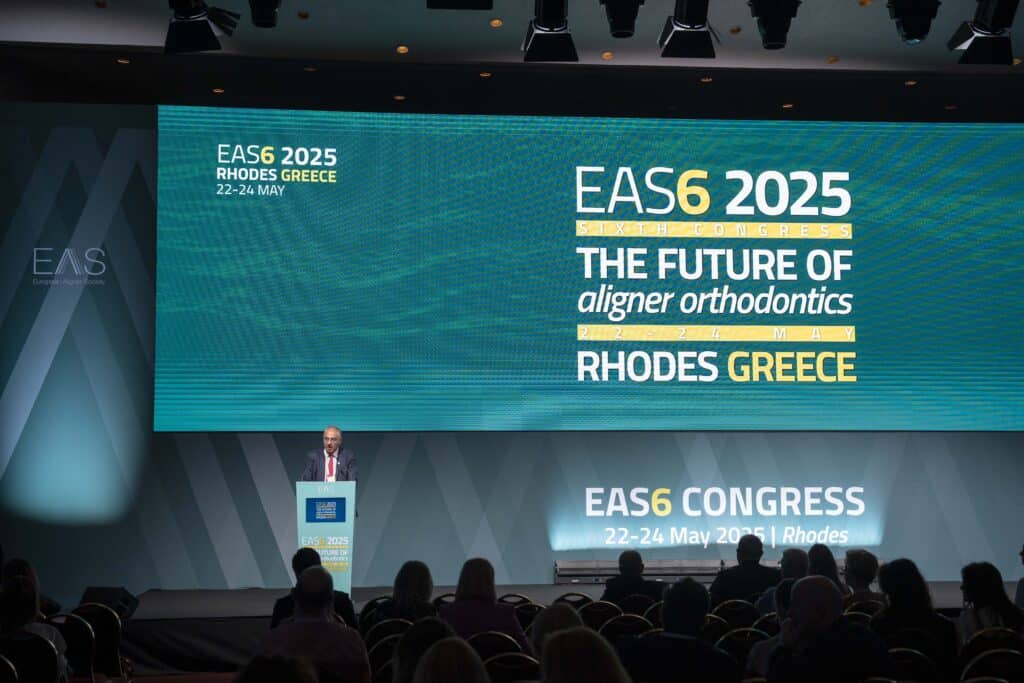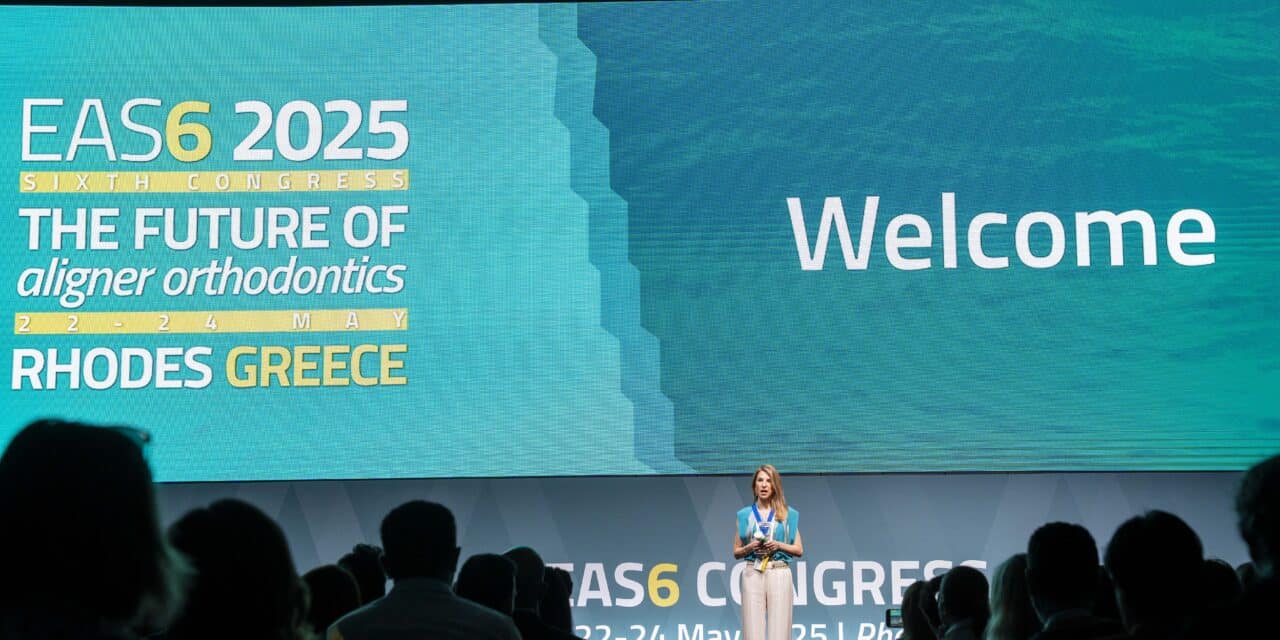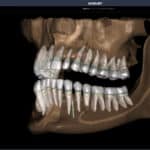With the European Aligner Society set to hold its inaugural North American Aligner Forum in August in Seattle, EAS U.S. Ambassador Dr Rooz Khosravi shares how the brand-agnostic event is designed to explore the latest innovations, clinical research and future directions in aligner therapy.
Correction 8/5/2025: The wrong event date was used in the original article. The correct event dates (August 20 to 30, 2025) are noted below.
Aligner orthodontics is rapidly evolving—and with it, the need for clinical education that keeps pace with innovation. This fall, the European Aligner Society (EAS) will host its first-ever North American Aligner Forum, taking place August 29 to 30, 2025, in Seattle. The 2-day event aims to bridge the gap between industry advancements and day-to-day clinical practice, bringing together a diverse roster of global experts, engineers, and educators. Uniquely system-agnostic, the forum emphasizes practical, evidence-based insights across multiple aligner platforms—offering hands-on workshops, case-driven lectures, and expert panels on everything from AI-assisted treatment planning to 3D-printed aligners.
To discuss the significance of the forum and the broader work of the EAS, Orthodontic Products spoke with Rooz Khosravi, DMD, PhD, MSD, an orthodontist in private practice in Washington state and EAS U.S. Ambassador and Chair of the upcoming forum, about why this event matters now—and what North American orthodontists can learn from their European counterparts.

Orthodontic Products: As the Chair of the first EAS North American Aligner Forum, what was the motivation behind bringing this event to a U.S. audience, and what makes now the right time?
Rooz Khosravi, DMD, PhD, MSD: My passion for aligner orthodontics began early in my residency training at the University of Washington. (Fun fact: We conducted the first few RCTs on aligner treatment, including a 7- vs 14-day switch.) Over the last decade, I’ve noticed that aligner-focused meetings in North America have largely been organized by industry—like the Invisalign Summit, which is a great event. But non-product focused aligner meetings in North America have been rare at best. More often than not, we only get a track on aligner orthodontics at major conferences such as the AAO annual meeting, but attending these lectures means sacrificing other valuable sessions.
In 2019, while searching for educational resources on aligner therapy, I discovered the European Aligner Society (EAS) through recorded lectures from their second congress in Venice. Their commitment to system-agnostic, evidence-based education resonated with me. Attending multiple EAS meetings confirmed my belief that North American orthodontists would benefit greatly from a similar community. As an educator and aligner systems connoisseur, I’ve been fascinated by the nuances of various aligner systems. I believe clinicians deliver better care when they understand how different systems work.
The idea of establishing an aligner society in the US grew stronger as I gained exposure to a wide range of aligner technologies and met orthodontists globally – one of the perks of speaking globally. Rather than founding a new society, I proposed creating a North American chapter within EAS. As the U.S. Ambassador for EAS, I pitched this idea to the board, who supported it. The result is the inaugural EAS NA Aligner Forum—a platform for unfiltered, cross-border collaboration in aligner orthodontics.
OP: What should North American orthodontists expect from this inaugural forum in terms of programming, speakers, and clinical value? How will it differ from other aligner-focused meetings?
Khosravi: The scientific program is modeled after successful EAS events in Europe. Our theme is “Bridging Industry and Clinical Excellence,” and the two-day format reflects that balance.
Day one focuses on innovation in aligner therapy. The morning features lectures by engineers and R&D-focused clinicians, including Zelko Relic from Align Technology discussing Invisalign innovations, and Kevin Boyle from Dentsply Sirona highlighting the integration of smart wires with aligner therapy. These two companies pioneered CAD/CAM-driven orthodontics. The afternoon offers hands-on workshops by Align Technology, Dentsply Sirona, Graphy, and Solventum.
Day two concentrates on advances in clinical science and everyday practice. We’ll learn from international experts including Ray Stewart, who developed Zendura FLX aligner plastics; EAS co-founders Drs Castroflorio and Garino, who will discuss the current state of aligner orthodontics; Dr Roberto Carrillo, developer of the Aliwell aligner system in Mexico; and Dr Greg Huang, Chair of Orthodontics at the University of Washington, who will present research on iatrogenic bone changes associated with aligner therapy.
The second day’s afternoon features a point-counterpoint debate on aligners versus custom fixed appliances, followed by a panel discussion on 3D-printed aligners with engineers, founders, and academics. We’ll conclude with talks on the business aspects of aligner therapy and how data-driven practices can maximize treatment success.
Unlike events focused on one aligner system, the EAS Forum emphasizes independent, practical insights around multiple aligner systems, giving attendees two full days immersed in the world of aligner orthodontics!

OP: EAS has been active for nearly a decade. For those unfamiliar with its work, how would you describe its mission and role in the orthodontic community—both in Europe and globally?
Khosravi: The European Aligner Society is dedicated to advancing aligner orthodontics through education, research, and global collaboration. It supports members through annual congresses, practical workshops, and informative webinars. EAS has established the European Board of Aligner Orthodontics (EBAO), which provides certification demonstrating clinical excellence through rigorous case submissions and examinations.
We’re currently launching a new peer-reviewed journal focused on digital orthodontics—creating a platform where innovations, clinical outcomes, and scientific research related to aligner therapy can be shared with the orthodontic community.
OP: From your perspective as an EAS Ambassador, what are some of the most important clinical or technological aligner trends the society has been following or supporting in Europe?
Khosravi: The EAS meetings have fostered deeper thinking about how aligners are used in everyday practice. I believe trends in orthodontics have ebbs and flows, yet a community dedicated to establishing principles will sustain through all the ups and downs. Nonetheless, observing aligner therapy in Europe, I’ve noticed a clear emphasis on clinical mastery—understanding biomechanics, staging, and system variability.
European practices tend to follow protocol-driven workflows shaped by influential educators. Clinicians are often more open to using a variety of aligner systems, which vary by country. In contrast, U.S. practices tend to revolve around two to three dominant aligner systems and have recently leaned more into virtual care and extended appointment intervals.
My conversations with European colleagues also suggest differences in patient management approaches, staffing models, and even appointment frequency. Of course, these anecdotal observations aren’t universal across both communities.
OP: What role does the EAS play in shaping or supporting clinical research and continuing education around aligner therapy? Are there any recent initiatives you think North American orthodontists should know about?
Khosravi: The EAS annual and summer congresses are leading platforms for aligner-focused CE. The society also offers scholarships and poster awards to encourage academic participation. Additionally, the forthcoming EAS journal will be a crucial addition to the field—fostering high-quality, peer-reviewed research in digital orthodontics.
OP: As digital workflows and AI-driven treatment planning continue to gain traction, how is the EAS approaching these developments? Are these technologies being embraced differently in Europe compared to the U.S.?
Khosravi: AI is undoubtedly transforming orthodontics. In fact, we’re opening the forum with Danny Abraham, founder of Oraca Dental AI, to share developments in this space. Many aligner systems globally now incorporate AI in diagnostics, planning, or tracking—so these developments are increasingly relevant regardless of geography. I believe participation in societies like EAS allows providers to stay current with AI-driven workflows and advancements in digital orthodontics.
For example, at EAS 6 in Greece, I had a fascinating conversation with Arda Dingiloglu, founder of Plan My Case in Turkey, about how they’re using AI-backed protocols to refine tooth movement algorithms. We’ve since begun planning a collaborative U.S.–Turkey research initiative.
OP: Looking ahead, how do you see the relationship between the European and North American aligner communities evolving? Could this forum signal a larger push for international collaboration in aligner education and innovation?
Khosravi: This inaugural aligner forum aims to ignite meaningful transatlantic dialogue in aligner orthodontics. Our long-term vision is to build a truly international aligner community where clinicians worldwide share data, ideas, and outcomes to collectively elevate patient care. Though we’re just beginning this journey, the momentum is building. I’m particularly encouraged by the growing interest from U.S. orthodontists in EAS events—many have already marked their calendars for EAS 7 in Brussels, April 16 to 18, 2026. North American attendance has been steadily climbing, with a notable increase at our recent EAS 6 conference in Rhodes. OP
Photos courtesy of Dr Rooz Khosravi.









